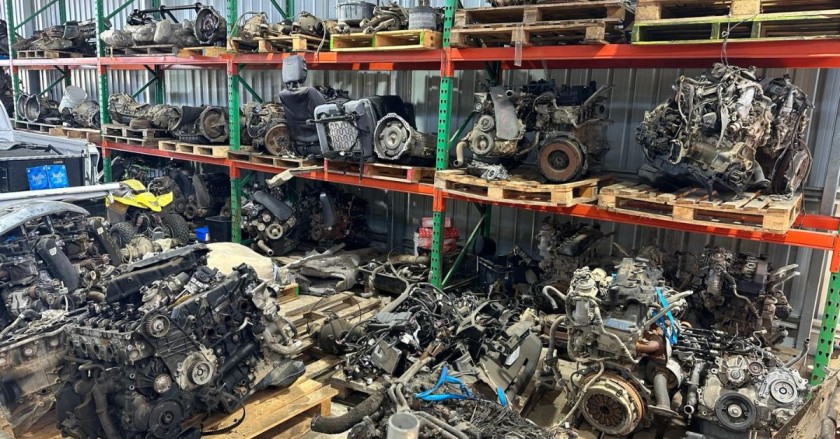When it comes to scrapping a vehicle, most people think of old tires, rusty metal, and broken parts that aren’t worth much. But there’s one component hiding underneath your car that’s often more valuable than the rest of the vehicle combined: the catalytic converter. It might look like a plain metal canister, but its contents are anything but ordinary — and that’s precisely why scrap yards are willing to pay so much for it.
In this blog post, we’ll explore in depth why scrap catalytic converters fetch high prices at scrap yards. From the precious metals inside to market demand, regulations, and even theft, we’ll break down every aspect of this often-overlooked goldmine of automotive recycling.
What Is a Catalytic Converter?
A catalytic converter is an emissions control device installed in nearly every gasoline-powered vehicle since the 1970s. It’s located in the exhaust system and is designed to reduce harmful emissions from the engine before they exit the tailpipe.
Catalytic converters convert toxic gases like carbon monoxide (CO), nitrogen oxides (NOx), and unburned hydrocarbons into less harmful substances such as carbon dioxide (CO2), nitrogen, and water vapor.
But what makes this device so valuable isn’t what it does — it’s what it’s made of.
Precious Metals: The Hidden Treasure Inside
At the heart of every catalytic converter are three precious metals that act as catalysts in the chemical reactions that reduce emissions:
- Platinum (Pt)
- Palladium (Pd)
- Rhodium (Rh)
These metals are incredibly rare, difficult to mine, and in high demand for both industrial and technological applications. Here’s a breakdown of why each is so valuable:
1. Platinum
Used primarily in diesel engine catalytic converters, platinum is one of the rarest elements on Earth. It’s also used in jewelry, electronics, and even medical devices. Its high melting point and resistance to corrosion make it ideal for catalytic reactions.
2. Palladium
This metal has become the dominant catalyst for gasoline engines, replacing platinum in many cases due to better performance and cost efficiency (until prices skyrocketed). It’s also used in electronics, dentistry, and hydrogen purification.
3. Rhodium
Rhodium is the most expensive of the three, and often the most volatile in price. It’s used in smaller amounts but is essential for reducing nitrogen oxides. As of recent years, rhodium prices have surged — at times surpassing $20,000 per ounce, making even small amounts extremely valuable.
Supply & Demand Economics
Scarcity
All three metals are rare earth elements, with most global supplies concentrated in a few countries like South Africa, Russia, and Canada. This geographical limitation makes supply chains vulnerable to geopolitical tension, labor strikes, and export restrictions.
Demand Growth
With growing environmental regulations around the world, demand for catalytic converters continues to rise. Even as electric vehicles gain popularity, gasoline and hybrid engines still dominate the global market, especially in developing countries. This sustained demand for emission control technology pushes up the value of catalytic converter components.
Recycling Value
Unlike many car parts that degrade over time and become worthless, the precious metals in catalytic converters do not wear out. They retain their value, making converters one of the most lucrative parts to recycle. Scrap yards see this as a business opportunity — and they pay accordingly.
The Scrap Yard Business Model
Scrap yards aren’t simply interested in collecting old cars for junk. They’re in the business of materials recovery, and catalytic converters represent some of the highest-value materials available.
Here’s how the process typically works:
- Vehicle arrives at the scrap yard.
- The catalytic converter is removed and stored.
- The converter is either:
- Sold intact to a specialised buyer, or
- Opened and the catalyst material extracted (crushed and sent to a refiner).
- Sold intact to a specialised buyer, or
- The extracted metals are sold on the commodities market or directly to industrial buyers.
The price a scrap yard will pay for a catalytic converter is based on:
- The make and model of the car (different converters contain different quantities of metals)
- The current market price of platinum, palladium, and rhodium
- Whether the converter is OEM (original equipment manufacturer) or aftermarket (which typically have lower precious metal content)
Catalytic Converter Theft: A Growing Problem
Due to the high value of catalytic converters, especially those from hybrid vehicles like the Toyota Prius (which contain more precious metals), there’s been a sharp rise in catalytic converter theft.
Thieves can cut out a converter in under 2 minutes and sell it to unscrupulous scrap metal dealers for quick cash. This crime wave has led to:
- New laws regulating converter sales
- Etching serial numbers onto converters
- Installation of anti-theft shields
While theft poses a serious problem for car owners, it also underscores just how valuable these devices have become.
OEM vs. Aftermarket Converters
Not all catalytic converters are created equal. OEM (Original Equipment Manufacturer) converters generally contain more precious metals than aftermarket versions, which are designed to meet only the minimum regulatory standards.
Scrap yards and buyers typically pay much more for OEM converters — sometimes hundreds of dollars more — depending on the brand and metal content.
A converter from a luxury car (like a Mercedes or BMW) may contain significantly more platinum or palladium than one from a budget sedan, making them even more attractive to recyclers.
Environmental and Regulatory Pressure
With stricter emissions regulations around the world, catalytic converters are more important than ever. Countries in Europe, North America, and Asia are imposing tougher standards on automakers to reduce their carbon footprint. As a result:
- Automakers are using more precious metals to meet the standards.
- Older vehicles are being retired and scrapped in greater numbers.
- The demand for recycled catalytic converters continues to increase.
Scrap yards see an opportunity here — and are paying top dollar to recover those materials and resell them to refiners and industrial users.
Conclusion: Why Are Scrap Yards Willing to Pay So Much?
Scrap yards aren’t just paying for a hunk of metal — they’re investing in a high-yield commodity asset.
Catalytic converters contain rare and expensive materials that:
- Retain their value over time
- Are in high demand due to environmental and industrial needs
- Are relatively easy to extract and sell
- Offer one of the best profit margins in automotive recycling
Whether you’re a car owner looking to scrap your vehicle or a business in the recycling industry, understanding the value of catalytic converters is crucial. It’s not just about what’s under the hood — it’s about what’s under the car, and what’s hidden inside that small, metal canister.
So next time you wonder why scrap yards are offering hundreds (sometimes even thousands) of dollars for a used catalytic converter, just remember: it’s not junk — it’s treasure in disguise.
Additional Tips for Sellers
- Never sell a catalytic converter without verifying it’s yours. Many jurisdictions have strict rules to prevent the sale of stolen converters.
- Research your converter. Use online tools or reach out to reputable buyers to find out what it’s worth.
- Avoid shady buyers. Work with licensed scrap yards and recyclers to ensure a fair and legal transaction.



